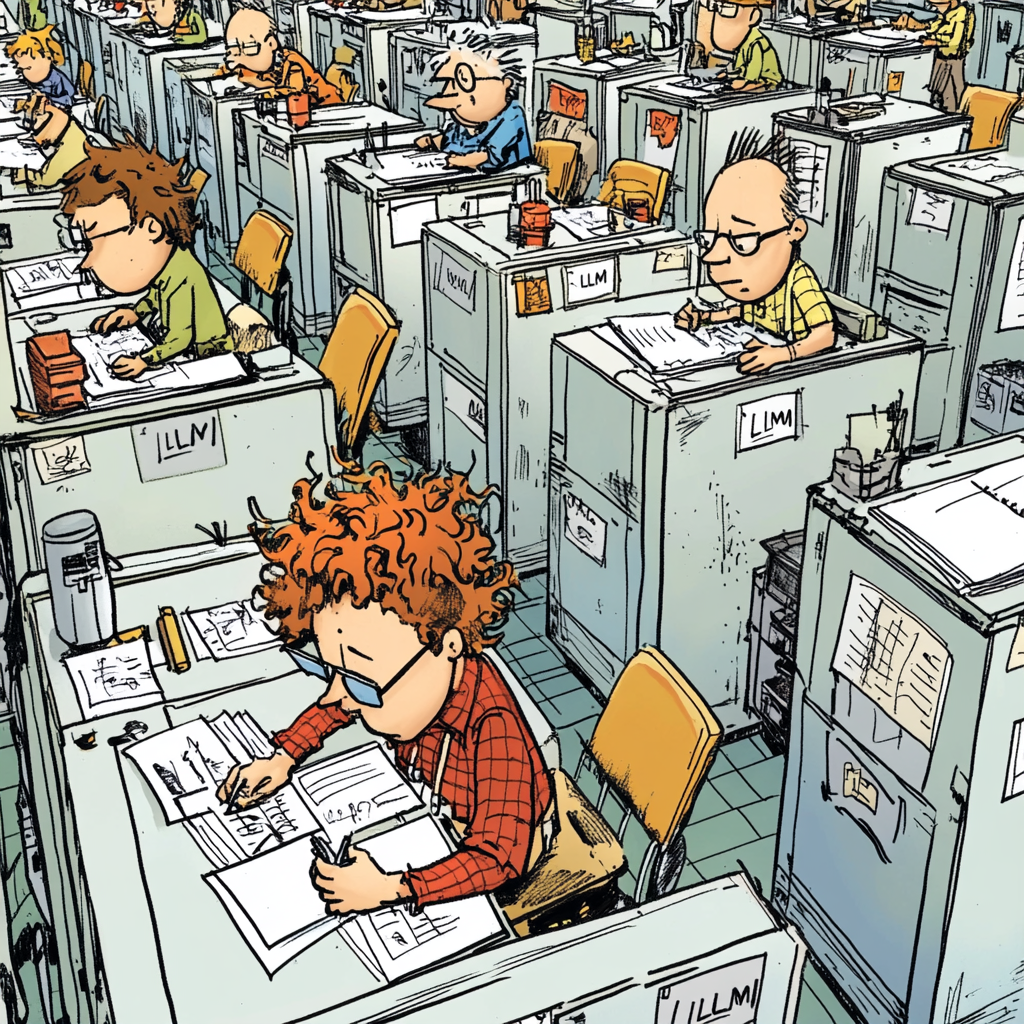As of January 2025, several AI and GPT models are available to the public, each tailored for specific applications and the popularity of AI and GPT models varies based on factors such as performance, accessibility, and user adoption. These models cater to a range of applications, from general conversational use to specialized tasks requiring advanced reasoning and multimodal processing. Below is an updated version of the list, incorporating notable developments and releases through early 2025:
Prominent AI Models and GPTs (Updated as of January 2025)
- Adobe Sensei
Adobe’s AI and machine learning technology for creative tasks. Continues to power features across Adobe’s software suite, increasingly integrating generative AI for image and video editing. - Alexa
Amazon’s voice assistant for smart home devices. Ongoing improvements focus on multilingual support and contextual awareness. - Anthropic’s Claude 4
Released in December 2024, Claude 4 builds on its predecessor’s strengths in math, coding, and logic tasks while incorporating improved multilingual support and faster inference times. - Apple Intelligence
Apple’s AI ecosystem integrates Siri, on-device machine learning, and privacy-first technologies. Partnerships with OpenAI and ChatGPT integration enhance conversational capabilities and user experiences. - Artbreeder
An AI tool for blending and creating new images. Continues to expand its capabilities for image generation, offering more customization options and styles. - Bing Chat
Microsoft’s search engine-based chatbot, frequently updated with refined language models and integrated with Microsoft 365 for broader productivity tasks. - Canva
An AI-powered design tool for creating graphics and visuals. Recent updates focus on advanced text-to-image features and layout suggestions, speeding up content creation. - ChatGPT
Developed by OpenAI, widely used for conversational AI and general assistance. The GPT-3.5 version remains free and popular for casual uses. - Cohere’s Command R
Focuses on retrieval-augmented generation, enhancing accuracy and contextual relevance in responses. The platform now integrates more robust domain-specific datasets for enterprise solutions. - Copy.ai
An AI tool for copywriting and content creation. Continues to refine its AI engine for more nuanced brand voices and multilingual output. - Copilot
Microsoft’s AI assistant for productivity tasks. Now integrated more deeply into the Office suite and GitHub, improving code suggestions and project management features. - Cortana
Microsoft’s digital assistant. While overshadowed by newer AI offerings, it remains in use in certain Windows environments with incremental updates for user queries. - DeepArt
An AI tool for transforming photos into artworks. Continues to add new art styles and filters, integrating user feedback to expand its catalog of creative outputs. - DALL-E
OpenAI’s AI model for generating images from text descriptions. DALL-E 3.5 (released late 2024) offers improved consistency, better color control, and style transfer features. - Google Assistant
Google’s voice-activated assistant for Android and smart home devices. Continues to refine natural language understanding and expand integration with Google Workspace. - Google’s Gemini 2.0
A new iteration of Google’s multimodal model, building on Gemini 1.5 Pro. Notable for improved reasoning and image-processing capabilities, designed for both consumer and enterprise applications. - Grammarly
An AI-powered writing assistant for grammar and style. Continues to expand AI-driven suggestions for tone, clarity, and inclusivity, with new features to check document coherence. - IBM’s Granite 2.0
Updated in late 2024 for enterprise applications, focusing on data security, compliance, and domain-specific fine-tuning. Enhanced for large-scale business deployments. - Jasper
An AI writing assistant for content creation. Offers improved SEO-focused tools and tone customization for different industries. - Meta’s Llama 3.2
Builds upon Llama 3.1 to provide finer-grained control over text generation and better custom data training capabilities. Emphasizes faster fine-tuning and inference on smaller hardware. - MidJourney
An AI tool for creating digital art. Latest release adds advanced text-to-image features and more realistic rendering styles. - Mistral’s Mistral 7B
Known for high-quality outputs with a relatively small model size. A rumored 11B version is in private beta, targeting improved performance on resource-constrained systems. - Nvidia’s Nemotron
Offers robust performance optimized for integration with Nvidia’s hardware. Recently updated with advanced GPU-acceleration techniques for lower latency in real-time applications. - RunwayML
An AI platform for creative professionals to generate and edit media. Now featuring advanced video editing tools with AI-driven scene detection and automated effects. - Siri
Apple’s voice assistant for iOS devices. Ongoing enhancements aim at tighter integration with Apple’s ecosystem, focusing on personalization and on-device processing for privacy. - Writesonic
An AI tool for generating written content. Expanded to include website copy generation and workflow automations for marketing teams. - xAI’s Grok-3
Released in late 2024, Grok-3 boasts improved performance over Grok-2, particularly in enterprise applications. Ranks among the top for paid-subscriber usage in specialized industries.
Current Versions of OpenAI’s ChatGPTs (Updated as of January 2025)
-
- ChatGPT (GPT-3.5)
- The foundational model offering conversational AI capabilities.
- Suitable for general-purpose text generation and everyday assistance.
- Remains a cost-effective option and continues to be widely adopted for casual use.
- ChatGPT Plus (GPT-4)
- An enhanced version providing advanced language understanding and generation.
- Ideal for complex tasks, detailed research, and higher-level reasoning.
- Popular among power users, students, and professionals needing deeper insights.
- ChatGPT Enterprise
- Designed for business applications, featuring enterprise-level security, compliance, and unlimited usage of GPT-4.
- Continues to expand integration options (Microsoft Teams, Slack, etc.), with robust admin controls for large organizations.
- Custom GPTs
- Introduced in November 2023, allow users to create tailored versions of ChatGPT by combining specific instructions, additional knowledge, and skills.
- Widely adopted by businesses seeking specialized AI functionality with custom training data.
- GPT-4o
- Released in May 2024, GPT-4o is a multimodal model capable of processing and generating text, images, and sound.
- Offers faster performance and broader capabilities, popular for creative and multi-data applications.
- Continued updates focus on refined multimodal embeddings and more efficient scaling.
- GPT-4o Mini
- A smaller, cost-effective variant of GPT-4o, providing efficient performance for applications requiring fewer computational resources.
- Gains traction among users with lower resource needs (e.g., mobile applications, embedded systems).
- o1-preview
- Launched in September 2024, showing strong performance in scientific, technical, and problem-solving applications.
- Known for enhanced reasoning abilities, making it suitable for complex problem-solving (competitive programming, mathematics, and research).
- o1-mini
- A streamlined version of o1-preview, offering faster response times while maintaining strong reasoning capabilities.
- Ideal for users seeking a balance between performance and computational efficiency, especially in academic or lightweight enterprise contexts.
Note on Popularity and Adoption Trends
- GPT-3.5 remains a go-to for casual, everyday interaction due to its low cost and solid performance.
- GPT-4 (Plus and Enterprise) and GPT-4o variants lead in advanced use cases—especially where multimodal capabilities or enterprise-level features are essential.
- Claude 4, Llama 3.2, Gemini 2.0, Grok-3, and Mistral 7B are increasingly competitive across various tasks, reflecting the diversified AI landscape.
- Customizable and domain-specific models (e.g., Custom GPTs, IBM’s Granite 2.0, Cohere’s Command R) are growing rapidly in enterprise settings, reflecting the demand for tailored solutions.
- ChatGPT (GPT-3.5)



